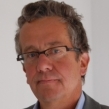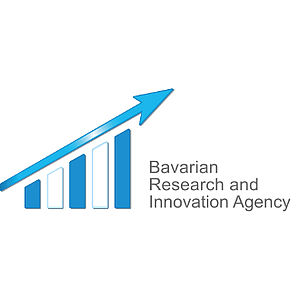
P-TRAP
![[Translate to Englisch:] P-Trap](/fileadmin/user_upload/BayFOR-bilder/projekte/BayFOR-ptrap-c.jpeg)
P-TRAP - Phosphorus in surface water – New approaches for disposal, recycling, and management
In Germany, almost two out of every three bodies of water contain too much phosphorus due to soil fertilisation. The result: Excessive growth of algae and aquatic plants that remove oxygen from the water, thus endangering the ecosystem. At the same time, phosphorus is a valuable resource. The EU project P-TRAP seeks to recover phosphorus from bodies of water and transfer it into a circular economy.
The mineral phosphorus performs a number of essential tasks in all living things and is irreplaceable. An average wheat harvest of eight tons per hectare, for example, removes 37 kilogrammes of phosphorus from the soil. Farmers must then reintroduce this nutrient back into the soil via fertilisers. The agricultural sector uses over 40 million tonnes of phosphate per year as a mineral fertiliser worldwide, according to information from the German Federal Institute for Geosciences and Natural Resources (BGR). Next to nitrogen, this resource is the most important nutrient in the world for increasing harvest yields. This creates demand for it as a resource, making it so valuable.
At the same time, soils are commonly being overfertilised. Phosphate makes its way into the groundwater, rivers, and lakes, where it causes massive plant and algae growth. This, in turn, removes oxygen from the water, which is dangerous to fish populations. The result: the body of water turns over.
the EU project P-TRAP seeks to develop new methods and approaches for recovering phosphorus from bodies of water and thus kill three birds with one stone: water management, resource recovery, and the establishment of a circular economy.
To do so, the project utilises the already existing drainage system in agriculture. This drainage system protects plants from harmful soil saturation by transferring excess water in the soil to a receiving drainage channel, such as a trench or ditch. However, these bodies of water often contain dissolved phosphorus. In the future, the water is to be collected at these points and mixed with iron oxide, because iron binds with phosphorus. The captured iron-phosphorus compounds will then be converted into a marketable fertiliser.
“What is special about this project is that we start with a drainage system here, not in the traditional way with sewage treatment plants, but with diffuse sources that reach surface waters via the groundwater.”, explains Prof. Dr. Stefan Peiffer from the University of Bayreuth.
As a whole, P-TRAP seeks to develop, test, and optimise novel approaches for recovering phosphorus from agricultural drainage systems. The P-TRAP consortium consists of 16 international partner organisations that together offer eleven new positions for young researchers. Characteristic of ETNs is the joint focus not just on research work, but also on educating a new generation of entrepreneurial and innovative young scientists. They are taking part in a structured training programme that counts BayFOR among its partners. The programme focuses on interdisciplinary workshops devoted to specific aspects of research and the targeted development of soft skills, such as entrepreneurship, project management, science communication, and many others. The programme also gives the doctoral students the opportunity to play an active role in industrial enterprises.
Project Overview
Project Aims and Fields of Work
- Development, testing, and optimisation of novel approaches to collect phosphorus in drainage systems and to convert the resulting iron oxide containing phosphorus into marketable fertiliser.
- Establishment of an innovative method to reduce eutrophication in lakes through the addition of ferrous water treatment reaction products.
- Development of an understanding for processes and mechanisms that regulate the behaviour of phosphorus during the conversion of iron minerals as well as their integration into mathematical prediction models.
The overarching objective of P-TRAP as an ITN is to educate a new generation of young environmental scientists, both in cutting-edge research as well as in practice, so that they are capable of reacting flexibly to changing environmental conditions in nutrient and water quality management.
Target Groups
The results of the P-TRAP project will be of importance for the following stakeholders:
- Academia
- Fertiliser industry
- Agriculture
- Environmental economics
- Water management
- The general public
- Tourism
- Political decision-makers
- Scientific journalists
BayFOR as a partner
The Bavarian Research Alliance provided extensive proposal application and contract preparation support to the project in cooperation with the Office of Research Support at the University of Bayreuth and also provided advice on the topic of “Innovation in Doctoral Training”. BayFOR is now also an associated partner for trainings on proposal writing, project management, and intercultural communication in the ongoing project.
Funding Period
The EU will provide this EU research project with EUR 3 million in funding from March 2019 until February 2023 as a Marie Skłodowska-Curie Innovative Training Network (ITN) (Horizon 2020, Call: H2020-MSCA-ITN-2018-ETN) as per grant agreement no. 813438. Of this funding, EUR 500,000 will go to Bavarian stakeholders.
Consortium
Under the coordination of Utrecht University in the Netherlands, 15 additional research institutions and companies from Austria, Belgium, Germany, Spain, Switzerland, and the United Kingdom participate in P-TRAP.
Coordinator
Utrecht University, Netherlands
Project partners
Universität Wien, Austria
Universität Bayreuth, Germany
Eawag - Switzerland
University of Manchester, United Kingdom
University de Sevilla, Spain
Katholieke Universiteit Leuven, Belgium
G.E.O.S. Ingenieuergesellschaft MBH, Germany
Stichting Deltares, Netherlands
Fertiberia SA, Spain
Aquaminerals BV, Netherland
Stichting Waternet, Netherland
Arcadis Nederland BV, Netherland
Bavarian Research Alliance, Germany
GeoTeam- Gesellschaft für umweltgerechte Land- und Wasserwirtschaft mbH, Germany
ETHZ – Eidgenössische Technische Hochschule Zürich, Switzerland
Further Informationen
Internet: www.h2020-p-trap.eu
Contact

Prof. Dr Stefan Peiffer
Head of Chair for Hydrology
University of Bayreuth
Phone: +49 (0) 921 552251
Email: S.Peiffer@no-spam-pleaseuni-bayreuth.de
Contact at BayFOR

Dr. Thomas Ammerl
Head of Unit Environment, Energy & Bioeconomy
Phone: +49 89 9901888-120
Email: ammerl@no-spam-pleasebayfor.org




